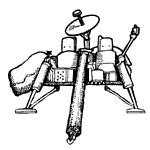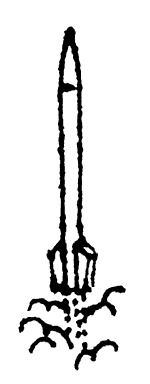|
The name of the strange substance in this unit came from none
other than Dr. Seuss (with permission, of course). Even though
the Dr. Seuss book, Bartholomew and the Oobleck, is generally
geared for younger students than the fourth–eighth graders
for whom these science activities are designed, the Dr. Seuss
book, properly introduced, can be used to good advantage by older
students as well. It’s also true that the Oobleck science
activities are often adapted for younger students, and in that
case the literary connection is age-appropriate and highly recommended!
Be on the lookout for stories about exploration and open-ended
investigation such as The Wise Woman and Her Secret. Such
stories fit well with Oobleck activities (or any discovery-based
science lesson) in which students model scientific behavior.
Many of the stories are about “goopy” substances, from
slime to quicksand to ketchup, and relate to Session 1. Stories
about defining words, as in The Search for Delicious, could
go along with Session 2. Stories involving technology, as in Chitty
Chitty Bang Bang, can relate to Session 3. Stories you may
find about exploring other worlds, as in The Three Astronauts,
fit well with Session 4. Science fiction and
nonfiction about lunar and space exploration would also connect
well with this session.
Bartholomew and the Oobleck
Chitty Chitty Bang Bang: The Magical Car
Einstein Anderson Tells a Comet’s Tale
Horrible Harry and the Green Slime
The Quicksand Book
The Search For Delicious
The Slimy Book
The Three Astronauts
The Toothpaste Millionaire
The Wise Woman and Her Secret
Bartholomew and the Oobleck
by Dr. Seuss
Random House, New York. 1949
Grades: K–9
A king orders his royal magicians to cause something new to
rain down from the sky. A green rain called “Oobleck”
falls onto the kingdom, in too much abundance, and its strange
properties cause quite a mess until the ruler learns some humility.
Return to title list.
Chitty Chitty Bang Bang: The Magical
Car
by Ian Fleming; illustrated by John Burningham
Alfred A. Knopf, New York. 1964
Grades: 6–Adult
Wonderful series of whimsical adventures featuring a magical
transforming car, an eccentric explorer and inventor, and his
8-year-old twins. It’s a nice combination of technical and
scientific information, much of it accurate, with a magical sense
of how some machines seem to have a mind of their own. The car
has humorous and fantastic technological adaptations: it flies
when it encounters traffic jams, becomes a boat when the tide
comes in, senses a trap, and helps catch some gangsters. The inventor
and invention flavor is a fun extension to Session 3.
Return to title list.
Einstein Anderson Tells a Comet’s
Tale
by Seymour Simon; illustrated by Fred Winkowski
Viking Press, New York. 1981
Grades: 4–7
Chapter 5 presents some very interesting information about
ketchup, a substance that sometimes acts as a solid and sometimes
as a liquid.
Return to title list.
Horrible Harry and the Green Slime
by Suzy Kline; illustrated by Frank Remkiewicz
Viking Penguin, New York. 1989
Grades: 2–4
Four stories about Miss Mackle’s second grade class.
In “Demonstrations,” Horrible Harry and his assistant
Song Lee show how to make green slime from cornstarch, water,
and food coloring. It’s a big success, ending with the librarian
taking it home to her husband who is interested in science. In
another story, they celebrate reading Charlotte’s Web by
making cobwebs and hanging them all over the school.
Return to title list.
The Quicksand Book
by Tomie dePaola
Holiday House, New York. 1977
Grades: 2–5
A jungle girl learns about the composition of quicksand, how
different animals escape it, and how humans can use precautions
to avoid getting stuck. Her “teacher,” an overly confident
jungle boy, turns out not to be so superior. A variety of graphics
and a helpful monkey give visual interest. A recipe for making
your own quicksand is included.
Return to title list.
The Search For Delicious
by Natalie Babbitt
Farrar, Straus & Giroux, New York. 1969
Grades: 5–8
After an argument between the king and queen over the meaning
of the word “delicious,” the quest for its meaning begins.
Everyone has a different personal definition of the word and war
looms. In Session 2 of the GEMS activities, students gathered
in a “scientific convention” often find the need to
define a word, and refine their descriptive language, just as
scientists do.
Return to title list.
The Slimy Book
by Babette Cole
Jonathan Cape, London. 1985
Random House, New York. 1986
Out of print
Grades: Preschool–4
Here is a lighthearted look at slime of the “sticky,
sludgy, slippy, sloppy, ploppy, creepy kind” and where it
may be found—around the house, in invertebrate creatures,
in foods, and maybe even in outer space. Excellent and fun descriptive
language of the properties of an intriguing form of matter.
Return to title list.
The Three Astronauts
by Umberto Eco; illustrated by Eugenio Carmi
Harcourt, Brace, Jovanovich, San Diego. 1989
Grades: K–5
An American, a Russian, and a Chinese astronaut take off separately
in their own rockets with the goal of being first on Mars. They
all land at the same time, immediately distrusting each other.
When they encounter a Martian their cultural differences disappear
as they unite against him. In a surprise happy ending, they recognize
the Martian’s kindness toward a baby bird and extend this
understanding to differences between all peoples. Younger children
may not get the full benefit of the sophisticated illustrations
and humor. The astronauts are all male, with no female characters
or references.
Return to title list.
The Toothpaste Millionaire
by Jean Merrill; illustrated by Jan Palmer
Houghton Mifflin, Boston. 1972
Grades: 5–8
Incensed by the price of a tube of toothpaste, twelve-year-old
Rufus tries making his own from bicarbonate of soda with peppermint
or vanilla flavoring. Assisted by his friend Kate and his math
class (they become known as Toothpaste 1), his company grows from
a laundry room operation to a corporation with stock and bank
loans. Beginning on page 47, Rufus designs a machine for filling
toothpaste tubes, which is a nice tie-in to the spacecraft designing
activities in Session 3 of this GEMS guide.
Return to title list.
The Wise Woman and Her Secret
by Eve Merriam; illustrated by Linda Graves
Simon & Schuster, New York. 1991
Grades: K–3
A wise woman is sought out by many people for her wisdom.
They look for the secret of her wisdom in the barn and in her
house, but only little Jenny who lags and lingers and loiters
and wanders finds it. The wise woman tells her, “The secret
of wisdom is to be curious—to take the time to look closely,
to use all your senses to see and touch and taste and smell and
hear. To keep on wandering and wondering.” This book captures
the essence of what is meant by discovery, student-centered, use-your-senses
learning, and, as such, serves as a fine accompaniment to science
activities.
Return to title list.
|
|


